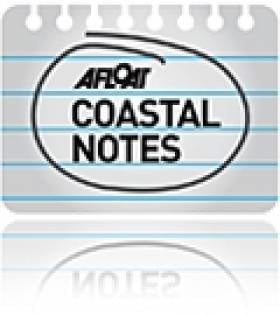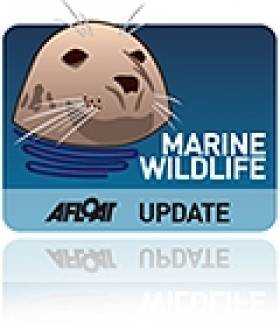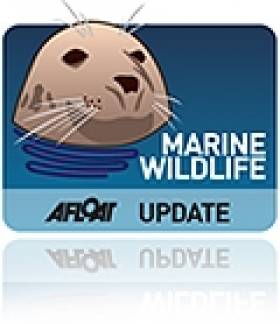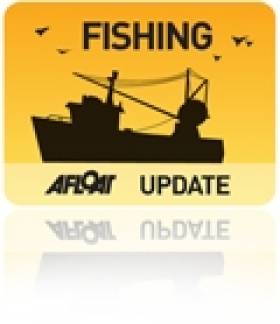Displaying items by tag: Irish Seal Sanctuary
Dublin Bay Prawn Festival Heads for Howth
A Sampi trail will be held in various pubs and hotels on the Friday night starting at 7pm, no booking is required. On the Saturday afternoon there is a Prawn Shelling Competition starting at 2.30pm.
Howth Yacht Club will open its doors to public viewing on the Saturday and the Howth Coastguard Station (West Pier) will also be open on that day too in addition to the Sunday. The West Pier is also to host a Fishing Techniques demonstration on Sunday at 3pm.
On the mornings of Saturday and Sunday a self-guided walk from Howth to up to Howth Hill taking up to two hours will meet at The Courthouse at 10am. The walk which is to be pre-booked and registered online is also suitable for families. The route is weather dependant and will follow one of the four looped walks.
The Irish Seal Sactuary will be offering a seal watching tour and harbour walks guided by volunteers on the Saturday and Sunday. An information stand will be made available for more details click www.irishsealsanctuary.ie
Throughout the weekend there will be all day events which include island boat / eco tour trips and the National Transport Musuem, noting that these activities will be charged. It should be noted that festival programme is provisional and is subject to change.
For more information about the full festival programme logon HERE and by contacting Howth Tourist Office on 01 8396955 and by email: [email protected]
Three Seals Set For Release This Weekend
The Irish Seal Sanctuary (ISS) is gearing up for three seal releases this coming weekend.
On Saturday 5 February ISS volunteers in tandem with the Dingle Wildlife and Seal Sanctuary will release Rupert and Rosie back into the wild at Beal Ban Beach in Ballyferriter, Co Kerry.
The two grey seal pups were rescued from the Dun Chaoin area last November within days of each other, the male pup with several injuries. Both now rehabilitated, it's expected they will rejoin the grey seal colony just off the Dingle Peninsula.
Then on Sunday 6 February the ISS will release another grey seal pup, Mary, from Kilpatrick Beach in Castletown, Co Wexford.
For more details on these releases visit www.irishsealsanctuary.ie
Erris Seals Back in the Wild
Whitecoat seal pups Snowy and Cecil were finally returned to the wild on Tuesday after their original Saturday release was postponed.
The two seals, who were reabilitated by the Irish Seal Sanctuary at Courtown Harbour after being found on the Erris Peninsula last October, were successfully released from Blacksod Point.
Mayo Today has photos of the release HERE.
Seal Sanctuary Sees Off Latest Releases
The Irish Seal Sanctuary celebrated the release of six grey seal pups from two different locations last weekend.
Dustin, Phoenix and Sean were released from Courtown Harbour, while Buddy Holly, Louise and Cookie were put into the water in Ballyferriter, Co Kerry with help from the Dingle Wildlife and Seal Sanctuary.
Sarah Forde, a volunteer at the Dingle sanctuary, told the Irish Independent that Buddy Holly was just 11kg in weight when he was brought in last October.
"Now, three months later, he's a healthy 44kg, the proper weight for a pup his age and in the next two years as he reaches maturity he'll grow to around 300kg," she said.
Louise and Cookie (pictured HERE) were found in a similar condition in beaches in Co Kerry after being abandoned by their mothers.
The Irish Seal Sanctuary's next release will be this Saturday 15 January when Cecil and Snowy, two seal pups rescued in Belmullet and rehabilitated at the sanctuary in Courtown, will be returned to the wild at Falmor Beach, Black Sod, Co Mayo.
EU 'Must Assist' Irish Fishing in Reviving Stocks
The Irish Seal Sanctuary has called on the EU to assist fishermen in the switch to selective fishing gear to help restore viable stocks in Ireland's waters, the Irish Environment Network reports.
EU Commissioner Maria Damanaki had threatened to close the Irish Sea as well as seas off the west of Scotland if nothing is done to allow the drastically low stocks of cod to recover to a sustainable level.
But the sanctuary's Sea Fishery Advisory Group believes that trawling in the Irish Sea would only need to be suspended for a period long enough to allow one year's class of fish to mature and spawn.
“We do not seek a closure, as there are selective methods to catch prawns, which the smaller boats could easily use," said a spokesperson, who added that "many fishermen consider the Irish Sea, a relatively small shallow sea, an important spawning and nursery area for much of our national waters.
"Fish spawned in the Irish Sea could help repopulate the areas north and south of it, if they had the chance,” the spokesperson added.
The Irish Times reports that Commissioner Damanaki had upset the Irish fishing industry with her hard line proposals to slash quotas for cod in the Irish Sea and the west of Scotland and close those fishing areas by 2012.
The EU's annual negotiations on European fishing rights concluded this week with concessions that will see the industry as a whole face a 0.9% reduction in quota.
Seals Could Be Trained to Find Bodies in Water
The family of a drowning victim are exploring the idea that seals could be utilised to recover bodies lost in rivers or at sea, The Clare People reports.
Brian Mooney - father of 31-year-old Brecan Mooney, whose body was never recovered after falling into the River Lee in Cork last November - said he had been in contact with the Irish Seal Sanctuary about the potential for seals to be trained to locate bodies in the water.
“We’re looking at the possibility of training seals to find bodies," he told The Clare People at the inquest into his son's death in Cork last week. "It’s never been done before anywhere, but they think there is a real possibility it could be done.”
Grey Seal Gets a Big Send Off
Last week saw the Irish Seal Sanctuary celebrate the release of Debbie, the first grey seal to receive care at the group's Courtown Harbour facility.
Photos of the release in Tramore are available at the Irish Seal Sanctuary's website HERE.
The sanctuary also last week welcomed its latest addition, a whitecoat pup named Pinky from the Belmullet Peninsula in Co Mayo.
Watch Out For Tagged Seals
The Irish Seal Sanctuary (ISS) has put out a call for observers to look out for tagged seals.
Following the news that a seal pup rescued and tagged by the ISS was discovered in Wales, the sanctuary is looking to build a better picture of what becomes of its seals once released back into the wild.
Observers are asked to report on the condition of any seals tagged on a hind flipper with an orange tage (for grey seals) or a yellow tag (for common seals) and with the code A4 written on one side.
The ISS hopes that this information will give a clearer idea of how rescued seals readjust to life in the open water, and how they interact with wild seals or with people in Ireland's harbours.
Any relevant information can be forwarded by e-mail to [email protected] or [email protected]
Irish Seal Sanctuary Receives Surprise Donation
A young supporter of the Irish Seal Sanctuary (ISS) has donated €450 to help the seals she visits regularly.
Staff at the sanctuary in Courtown, Co Wexford were amazed when 13-year-old Sarah Butler donated her personal savings towards the care of stranded or orphaned seal pups.
Sarah and her mother Karen from Wexford town have been frequent visitors to the sanctuary and even adoped its first grey seal of the season, named Debbie.
In recognition of Sarah's incredible generosity, the ISS has awarded her with 'freedom of the sanctuary' and welcomed her to visit any time she wants.



































































